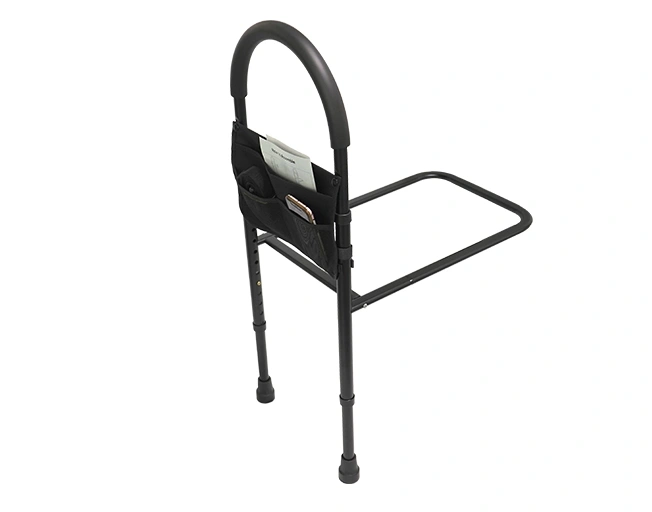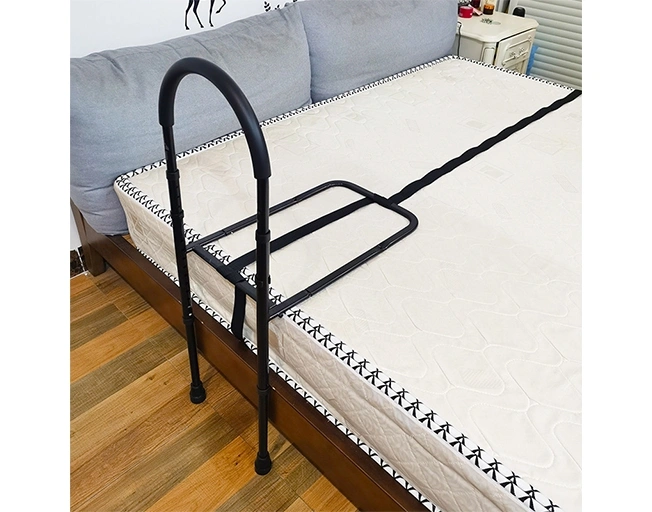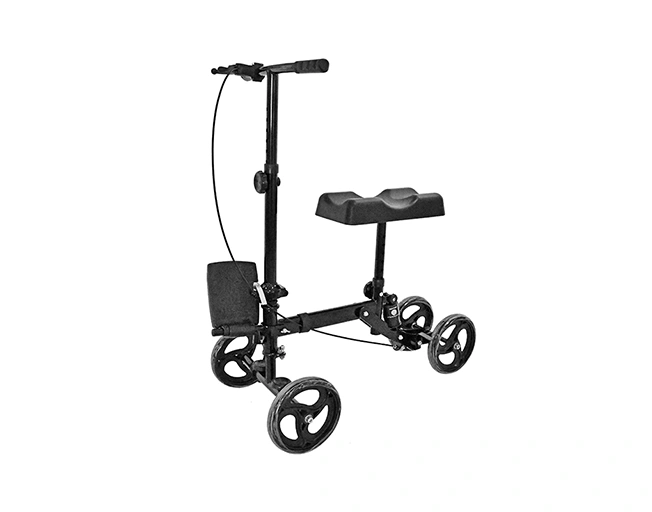病院ベッドにレールがある理由:患者の安全対策への深いダイビング
時間 : 2025年10月29日 表示回数 : 1,279
病院のベッドレールは現在ほぼすべてのクリニックや病院の部屋で見える。ベッドの上の手軽なサイドガード?人々を傷つけないようにします。医師や看護師は、患者の安全を確保するために彼らに頼っています。 ベッドレール 本当に不幸を避け、すべての人が良いケアに集中させるのに役立ちます。これらのレールがなぜそんなに賢いアイデアであるのかについて話し合いましょう。私たち’彼らが毎日人々を保護するために実際の医療場でどのように働くかを見てみましょう。

患者の安全におけるベッドレールの役割
ベッドレールは患者を困難から守るために多くの作業を処理します。さらに、忙しい病院や小規模なクリニックでのケアの行動を強化します。
落下を止め、患者を安全に保つ
それを考えてみましょう - ベッドレールの主な理由は、誰もがベッドから落ち着くことを防ぐことです。瀑布は医療場所で頻繁に現れ、本当の痛みを引き起こす可能性があります。しかし、ここ’s 良いニュース: 彼らのほとんどは’Tは起こらなければならない。鉄はそこに堅固な鉄鉄のように立っています。彼らは患者を安定しており、特に彼らが’再眠り、あるいはちょっと落落ち着く。これは、混乱したり、バランスが失われたり、病気や薬から硬くなったりする人にとってクラッチになります。レールがなければ、スリップは骨の裂き、頭の悪いノック、またはより悪い頭痛を意味する可能性があります。これらのすべては、病院の訪問を引き延びたり、足に戻ることを阻止したりするかもしれません。
患者の移動と独立を支援する
しかし、レールはただのブロック落下よりも多くのものを行う。彼らは助けなしに人々を動かす手を借ります。誰かを言う’ベッドでスキュートするか、チャットするために道具を持つ鉄道に到達する s。あるいは、近くの椅子や車椅子に足を振り込むかもしれません。手術後、腕がジェリーのように感じる場合、またはステップを混乱させる継続的な痛みがある場合、それらのレールは救命を与える。彼らは固体的なものを与えます. 患者は自分のルーチンの部分を行う結局, それは精神を上げ、復帰を加速します.
特別に安全なグループを保護する
みんな同じ時計を必要とするわけではありませんが、確かに必要な人もいます。高齢の親戚を取ってみましょう。彼らはエッジがどこにあるか忘れるかもしれません。または、睡眠の中で知知覚認症からの模糊な考えを持つ人もいます。手順の後でさえ、grogginessがハードに打つとき、レールが入ります。 これらの人々はしばしばドロップの警告の兆候を見逃すか、筋肉はただ’t協力します。鉄道はその安全性の追加的な抱き合いを形成します。そして、振動やワイルドトリッチで打たれた人々にとって、そしてそしてそしてそして、そしてそしてそしてそしてそしてそしてそしてそしてそしてそしてそしてそしてそしてそしてそしてそして、そしてそしてそしてそして結局、レールは、病院の光の中でこれらの柔らかいグループを安らかに休むようにします。
病院ベッドレールの種類とその機能
医療チームは様々な鉄道スタイルから選択します。それぞれは、患者が直面するものと一致します。
フルLength vs. Half Length Rails
ベッド’の全長を抱く映像のレール;S サイド。完全なものは、長い盾のようにすべてを包み込んでいます。トンブルが起こる可能性が高い場合、または周りを移動するために必要な追加のプッシュに最適です。その後、より短い友達 - 肩や腹の周りなど、上部に固まる半長のレールがあります。看護師はチェックやワイプのためにすぐに入ることができますが、安全性は快適です。これらの短いものは、誰かがソロスライドを取り組むことができ、またはケアが毎時間電話するときに輝く。
調整または離れるレール
新しいベッドには、回転したり、ポップしたりするレールが付属しています。製品は取り外し可能で、掘削は必要なく、設置が容易です。看護師はその瞬間に合わせてそれらを高くまたは低く調整します。取り外し可能なアクティブベルトスイッチフットアセンブリは,柔軟に分解し,組み立てることができます.調節可能な高さと底のプラスチック足ペダルは両側で開くことができます。それ’s のリアルタイムセーバー、スマートな設定、そして混乱なしで部屋をクリアします。これらのすべては、チェックアップ、快適な場所、または家に向かうステップに合うためにレールを曲げます。
安全な使用に関するガイドラインと考慮事項
鉄道を正しく取得することは、前に考え、スマートな習慣に固執することを意味します。そうすれば、スリップアップなしに輝く。
滞在を避ける
気をつけましょう-レールはそう設定しない場合、あなたを欺くことができます。患者はギャップにレーレーレールを交わせたり、フラッフやバーの内部に閉じ込まれるかもしれません。だから、チームはそれらをスポットオンに並べて、そのスペースを日々見ています。車椅子に衝突し,車車車車車椅子の表面に車車車車椅子の表面に車車車車車椅子に車車車車車椅子を車車車車車椅子の表面に車車車車車仕事の迅速な作業とベッドのフラフは安定した時計を維持します。
安全規則に従う
すべての病院は鉄道のノウハウに先頭をつけています。食品薬品管理局や合同委員会などの大手企業が法律を制定した。ビルドスタイル,セットアップステップ,修正ルーチン,ノートメーキングに影響します.閉じ込むことは、レールが患者’に合うことを意味します。奇妙さと心配はまったく良い。
看護師とヘルパーを教える
床の人々は鉄道のスマートについて深く学ばれます。彼らはスイッチを切り替え、誰が何を必要とするかをサイズアップし、タブを守るためのトリックを取ります。座席の位置を変えないでください。車椅子が回転するのです。レッスンは、危険を見つけること、快適なフィット、患者とのチャット、そしてどうしたら計画を受けます。新鮮なドリルと迅速なクイズは,スキルをスススキャッチとしてススススキルを新新新鮮に保持します.

Xunyu医療:患者安全装置の信頼できるサプライヤー
病院のような場所は、守り、導く装備で安定したパートナーを探しています。
最高級のベッドサイドハンドレールとモビリティアイドを提供
広東省佛山市南海区のダンザオ町に広広東省の佛山市にある福山市Xunyu医療技術株式会社は,黄金年にわたってギアにゼロを置き,クラッチ,ウォーカー,シャワー椅子,ベッドサイドのコンモード,トイレのアームレスト,ベッドサイドのハンドレイル,トイレのライザーを持っています.1日から、 Xunyu 医療 新鮮なトイストを追った。彼らは長老たちが本当に望むものを抱くために構築を調整します。
Xunyu医療は堅実な仕事と確実な賭けに心を注ぎます。ベッドサイドのハンドレールまたは安定したことを考える ウォーカー――彼らの株はヨーロッパ、北米、中東、アジア太平洋全域に飛びます。大きなウェブショップやケアハブがそれらを取り上げます。彼らの核心は、信頼性が高く、賢い工芸を通じて高齢者の自信を燃やすことを目指しています。It clicks with what med worlds chase: guards that let people stand tall. それはメドの世界が追いかけているものとクリックします。Xunyu医療?ベッドサイドのハンドレイルやモビリティアイドを望む場所のための堅固なチームメイト。

結論
ベッドレールは大小の病院で安全網を固定します。彼らはスリップで停止し、動きのためのナッジ、脆弱なもののための包装をジャングルします。スタイル、安全なプレイ、ルールブックを捉える?その’ドラマなしで配達する鉄道へのチケット。ヘルスケアは進んでいますので、Xunyu Medicalのような友達は滞在します。彼らのトップシェルフベッドレールとモビリティ援助燃料ケア’優しく、音、そしてスポットオンです。
FAQについて
Q1:病院ベッドレールは何から作られていますか。
A:ベッドのためのレールは毎日のバンクとスクラブを取るために厳しいものをパックします。フレームは22MMのパイプ直径と2.0MMの壁厚さの高強度アルミ合金溶接で作られています。ストレージバッグ/泡のハンドルビットが付いているスポーツ炭素鋼/全フレームスプレー/取り外し可能/掘削なし/の多く。これは長距離の強さとソフトタッチの容易さをもたらします。Stuff bows to tough med codes on guard, スクラブ・シンプル, およびガガガードからガガガードの厳しいメドコードにガーガード, スクラブ・シンプル, およびガマママラソンのガーダウンマラソンからの
Q2: ベッドレールは高齢者ケアのために自宅で使用できますか?
A: 確かなこと-レールは家の設定にまさに適合しており,長老たちがガードまたはグライドヘルプを見ている.製品は取り外し可能であり、掘削は必要なく、設置が容易です。家の種類はしばしば取り外し可能/掘削なし/日常のベッドとメッシュするストレージバッグ/泡ハンドル/フラットチューブ設計の特権を持っています。つまり、必要性をサイズアップし、最初にドキュメントにループします。それはピックにロックされます’暖炉および家のための安全でスポットフィット。
Q3:ベッドレールを使用しない場合はありますか?
A: あなたはベット-レールドン’あらゆるシーンに適しています。修正よりも混乱するかもしれません。スキップ ’トラッピングが可能に見える場合、または登山がスパイク落ちオッドスを促す場合。バーで怒ったり、混乱したりする人々?パスもする。心配なくソロをジップする人は、セットアップをスキップするかもしれません。フロアチームは各ケースを重み,レールを選ぶか,新鮮なガードトリックを交換します.


